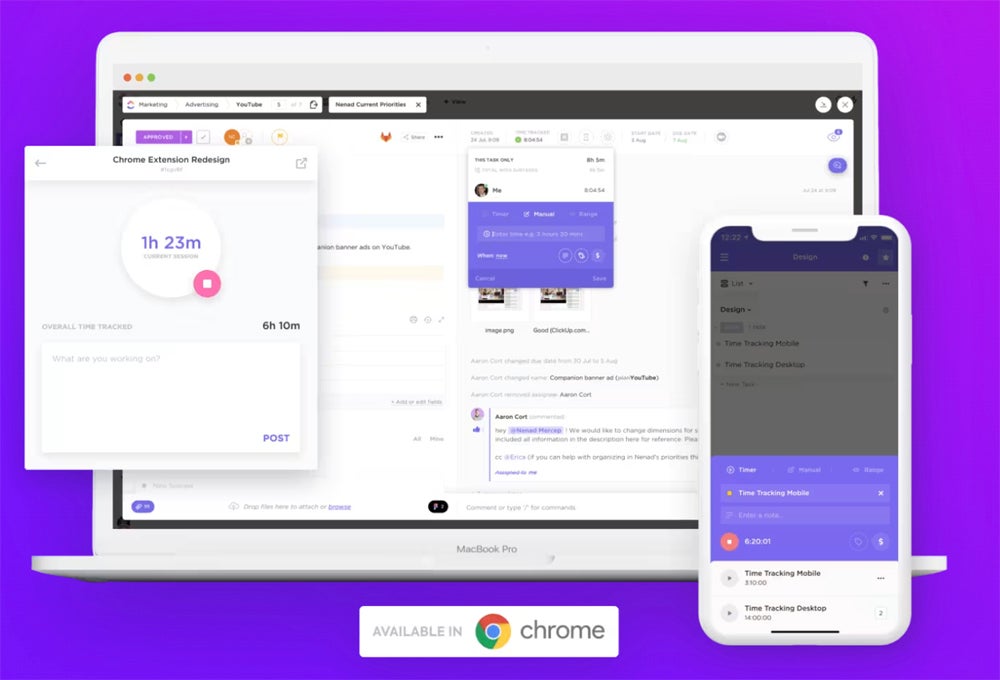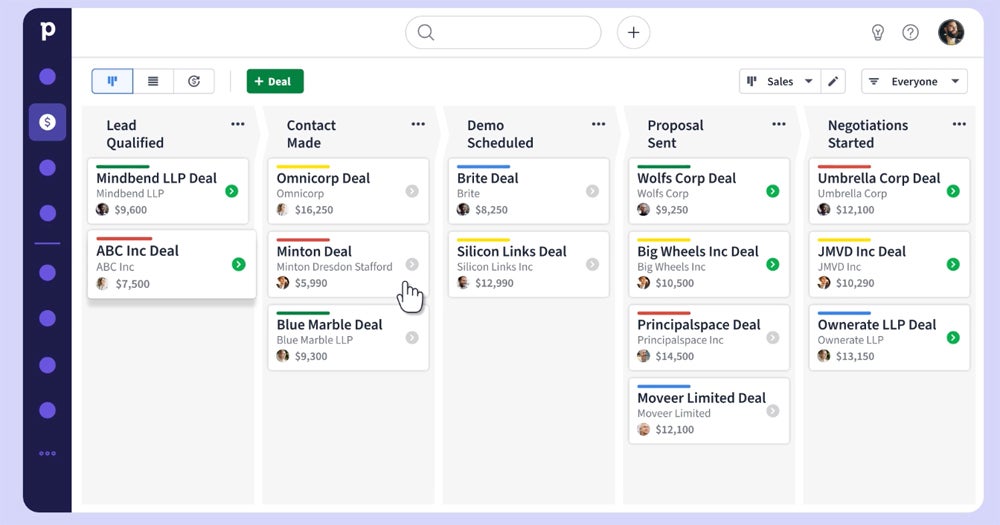Operational customer relationship management tools offer advanced custom workflows, visual pipelines, and day-to-day operation management tools to provide the best client experience with minimal effort. Choosing a CRM emphasizing operations can help centralize business information and reduce manual work.
What is operational CRM?
Operational CRM is a type of CRM solution that supports a business’s day-to-day sales and marketing operations. These operations can include everything from marketing to lead nurturing to back-office management.
CRMs that fall under this umbrella are typically generalized CRM solutions that can be adapted to fit a specific industry or company size. You’ll find that operational CRM solutions offer advanced automations to do a lot of the heavy lifting around updating statuses or other recurring tasks so sales reps can focus on nurturing customer relationships.
There are three other types of CRM software, including marketing, collaborative, and analytical. Operational CRMs are best for businesses that need help with general customer relationship management, such as providing ongoing support post-sale.
How does operational CRM software work?
Operational CRMs work by streamlining the sales process in a transparent and secure digital system. While operational CRM features might overlap with core CRM features like lead nurturing, its purpose is to do so efficiently and effectively through automation. Features like time tracking, task assignment, and lead routing are all advanced operational features. These help sales managers and representatives track daily activities and progress toward goals.

Robust project management, workflow automations, automated marketing campaigns, and follow-up tools are also common operational CRM features. These all help teams deploy new strategies quickly and have a single source of truth when it comes to checking the status of any given project, deal, or lead.
An operational CRM can also be optimized through integrations. When a business syncs its CRM with all other business tools, users can reduce the time spent jumping between programs.

TechRepublic Resources: CRM Feature and Services Comparison
Benefits of operational CRM
The benefits of using a generalized CRM can also be seen in an operational CRM—with the added focus on the benefits of running automations and managing projects and tasks.
Centralizes information
Operational CRM software completely centralizes all customer data and information. With the ability to create custom pipelines and dashboards, users can view real-time information. This is the case for visibility around sales stages, customer profiles, and analytical reports.
For example, any user can check the status of any ongoing deal, see who the last person was to engage with the lead or see what marketing email campaigns have been sent to a lead. This transparency helps reps confidently provide stellar client experience.
Interdepartmental alignment
Operational CRM software can align marketing, sales, support, and operations teams within one hub. Users can tag each other in lead updates, quarterly reports, and project updates within the tool for complete visibility into business initiatives. Internal communication is built into operational CRMs so reps can tag team members in updates or escalate support with just a few clicks.
Reduce manual task completion
This is a major benefit of operational CRM systems. With features like task automation, follow-up automation, or reporting automation, users don’t need to waste time manually checking off to-do lists, sending mass follow-up emails, or pulling daily reports.
By building out triggers, workflows, and custom automations, operational CRM users can trust the platform to complete mundane tasks in the background. This will also eventually reduce sales cycle length and increase the turnaround time from lead generation to deal closing.
Top operational CRM tools
| Pipedrive | |||||
| ClickUp | |||||
| Salesforce |
Pipedrive
Pipedrive is a sales-forward CRM solution that can be adapted to various industries. As a scalable CRM software, users can build custom dashboards and pipelines reflecting their unique selling process. Pipedrive also helps with task and pipeline management, tracking activity, communication, and updates.
ClickUp
ClickUp is a powerful project management CRM solution. It offers unique product development and resource management tools for tracking business operations. Users can manage sprints, manage backlogs, and run reports quickly. Other day-to-day operation tools ClickUp offers include time tracking, workload views, and goal transparency.
Salesforce
Salesforce is a popular CRM solution that I recommend for enterprises or large organizations. As a top AI CRM software, users can build automation, generate copy, and receive predictive reports. In addition to AI functionality, Salesforce offers highly customizable dashboards that can reflect day-to-day operations. This all helps build sales efficiency and boost individual and team productivity.
How to choose an operational CRM system
I recommend following the same best practices when choosing a CRM solution, regardless of industry, company size, or ideal CRM type. To get started, I suggest researching the three options above to understand their ideal use cases and identify whether they can provide real solutions for your business.
Here are some things to consider when choosing an operational CRM system:
- Does this CRM tool integrate with my existing tech stack, such as Outlook for email?
- Does this CRM tool offer the marketing tools that my business needs?
- Does this CRM offer a free version that comes with all the features I need?
- How does this CRM pricing work? Does it fit in our allocated budget?
- Can the core sales features offered by this software streamline my sales process?
- Do we want an open-source CRM to maximize developer-friendly customizations?
- How quick is the onboarding process to get started using this tool?
- Can the CRM software scale up to adapt to my growing business?
- Does this CRM tool have any in-market specialization in my industry?
FAQs
What is the difference between operational CRM and analytical CRM?
The main difference between an operational CRM and an analytical CRM is that an analytical CRM offers features and functionality specifically focused on collecting, organizing, and storing company data.
That being said, generalized CRM software can fall into both categories. This is because all CRM software is built to help manage business processes, while some offer advanced analytical or operational features that market them as specific types of CRM solutions.
What is the primary goal of operational CRM?
The primary goal of operational CRM is to help businesses streamline their day-to-day operations and customer interactions. Whether it’s providing task management tools, open communication spaces, or real-time reports, these types of CRM software are meant to improve the user’s experience and in turn, the client’s experience with the business.
How does CRM operate?
CRM software manages all types of customer data through a series of workflows, automations, and dashboards. They act as a hub for all client information so users can generate new leads, manage ongoing deals, or provide customer support. With a built-out CRM cycle, businesses have a digital roadmap for their reps to follow to generate leads, nurture them, and then close deals.

